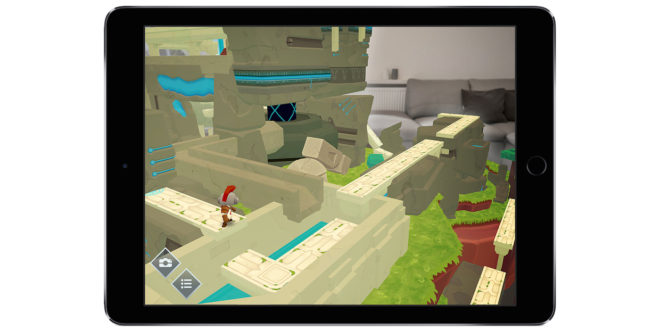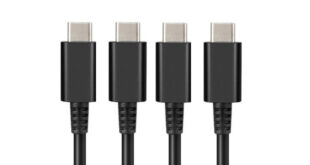Watching the Apple Event, I was surprised with how little time was spent on the AR capabilities of the new iPhone 8 and iPhone X. Having lived and breathed both VR and AR for the last four years it’s easy to forget that most people are still largely in the dark. The excitement of VR swept through the games industry and wowed investors. It almost feels like ancient history now.
It felt to me that the shine of VR had worn off. Hardware costs were too high and a lack of killer games to drive adoption meant a small install base. The commercial viability of producing self-funded games was borderline at best. Climax’s most successful titles have been made with a limited budget and sold at a modest retail price on mobile VR devices. With cross platform publishing we achieved sales in the hundreds of thousands of units. However, in recent months there has been a resurgence of interest in VR and I say this from a business opportunity point of view.
If things are easy to use and have nearly zero friction then they will become ubiquitous
The price drops, the arrival of games with both better production values and understanding of how good VR works has led to a visible increase in adoption. I noticed this with the several Twitch streamers I follow and particularly, Lone Echo from Ready at Dawn seems to have caught the attention.
Business enquiries regarding VR have started to rise too. I was at Oculus’ HQ a few weeks ago and there was a definite spring in the staff’s step and a newfound confidence about its place in the market. It was good to see, given its role in the more recent story of consumer VR.
Some of our focus has moved to AR. We launched Towers on the Google Tango device and learned a lot. We did a fair bit of research on the HoloLens, which was very illuminating. We have a number of other AR titles in the works and recently broke cover with ARise, our launch title puzzle game for iPhone and iPad using ARKit.
The genius of the Apple approach to AR is that, as a software solution in iOS 11, the functionality is going to be pushed out to all of their supported hardware overnight. It sidesteps the whole issue of low install bases and user uptake. With close to 400 million potential devices day one, the economics of producing AR content suddenly make sense. And with Google hot on their heels with ARCore launching on Android next March, AR will be available to the masses. Over a billion AR devices – the opportunities are staggering.
But how AR is going to become involved in everyday life? Well at the risk of overselling it in the short term, I see it as all pervasive. It will touch nearly every aspect of a persons life and their activities. For me it is all about friction. If things are easy to use and have nearly zero friction then they will become ubiquitous.
At the moment if my phone makes a noise, I have to get it out of my pocket, unlock it and then tap an icon to read the message. Most of the time that message could wait or is totally irrelevant. I’ve short cut that by using a smart watch, glancing at it to read the first few lines of the message and decide if it warrants further effort. The watch also performs other functions like health monitoring and it even tells the time!
Now, imagine that technology with another personal item that many people already carry. I see a future where I have some AR glasses (that hopefully don’t look ridiculous) and that header message will pop up in my vision and I can use a verbal command to either open it, store it for later, or kill it. Phone AR is a long way from that, but it is all part of the journey. It allows the technology to get smaller and lighter and more efficient in terms of power draw and heat generation.
The face recognition technology in iPhone X is also interesting as not only could it recognise me, but can start to recognise other people. This then leads to more reduction in friction. Information is being relayed to me constantly. Be that reminders of who I am talking to through to navigation, news and messages. I’ve downloaded many apps that I was interested enough to go through the process, but only used a few times. A good example of this would-be astronomy apps that show me the location of planets and constellations and the ISS. The effort to use outweighs the benefit. Reduce the friction and make it available on a voice command and I’d be re-engaged.
A further possibility of portable AR systems is a TV screen. You can place virtual screens in an environment through AR. The important thing here is to look beyond the novelty of it and see the real take away – you don’t need a TV with AR. I heard rumours of an Apple TV screen a few years ago, which never materialised. What if Apple realised that AR was truly a disruptor technology? That progression from phone to glasses AR would be the end of all screens?

 MCV/DEVELOP News, events, research and jobs from the games industry
MCV/DEVELOP News, events, research and jobs from the games industry




